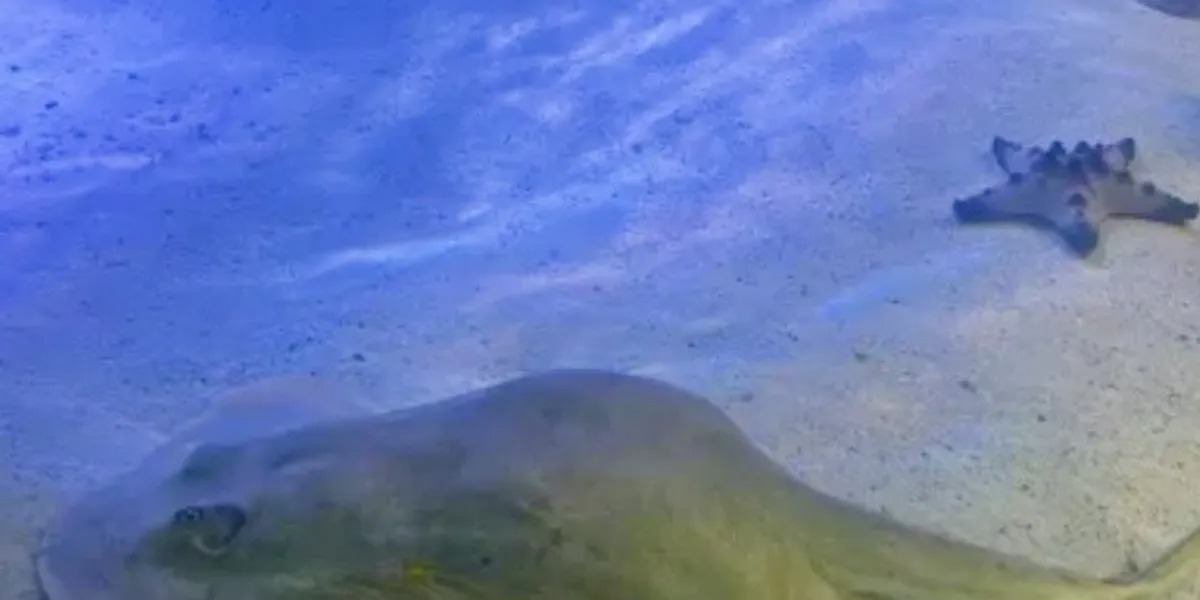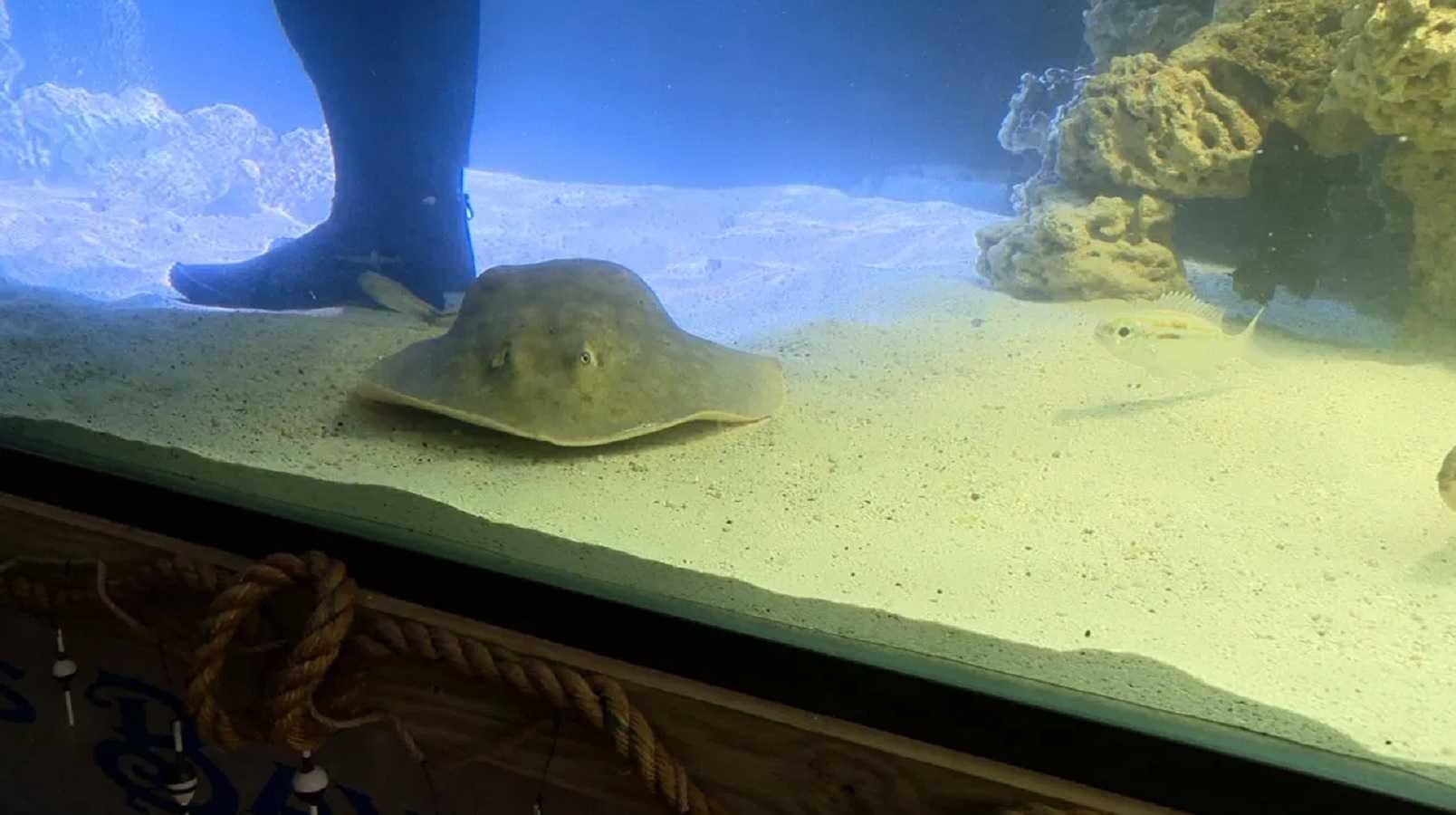Charlotte, a California round stingray residing at the Aquarium & Shark Lab in Henderson, North Carolina, has captivated both locals and scientists with her unexpected pregnancy, as she is believed to be expecting offspring without ever having been in contact with a male of her species.
Having been a resident at the aquarium for over eight years, Charlotte’s situation began to unfold in late November when she developed an unusual growth on her body, initially raising concerns among the staff that she might have a tumor.
Kinsley Boyette, the aquarium’s assistant director and Charlotte’s dedicated caregiver, expressed the initial worry, stating, “Her hump just started growing and growing, and we thought that it could be potentially cancer.” Such cysts are known to sometimes form in the reproductive organs of rays when they fail to mate.

Virgin Stingray (Credits: Raw Story)
Upon performing an ultrasound and sharing the results with scientists, it was confirmed that Charlotte was, in fact, carrying eggs. Subsequent scans even revealed the presence of tiny flapping tails, indicating the embryos’ development.
Thought to be between 12 to 14 years old, Charlotte could give birth to her “pups” at any moment. Such virgin births are exceedingly rare, and the gestation period might vary from the normal three to four months.
The news of Charlotte’s pregnancy has sparked anticipation in the local community. Following lengthy renovations, the aquarium recently reopened, drawing significant attention from visitors eager to catch a glimpse of Charlotte. Boyette shared, “Just about everybody coming through our door wanted to see Miss Charlotte — it’s very, very exciting.”
Beyond her unusual pregnancy, Charlotte, approximately the size of a dinner plate, shares her living space with five small sharks and charms visitors with her friendly demeanor.
Boyette recounted a recent interaction, saying, “I got in the tank with her this morning and she was just doing laps — she was doing circles because we had a class here of kiddos and she loves the attention.” Charlotte readily approaches the glass when approached and enjoys cuddles from her favorite people.
Additionally, she has a particular fondness for crawfish, which she occasionally receives as a treat, along with her regular diet of shrimp, oysters, and scallops.
Round stingrays typically hatch their eggs internally before giving birth to anywhere from one to four pups. However, the odds of health issues and death rise in virgin births, according to experts.
Charlotte currently resides in a 2,200-gallon tank, roughly the size of a small dumpster. Since she is thought to be carrying up to four offspring, the aquarium hopes to double the size of her tank if all goes well.
The ability of certain species to reproduce without male genetic contributions, known as parthenogenesis, was long considered exceedingly rare. However, in recent years, it has been documented in various vertebrates, including birds, reptiles, and fish — though not mammals.
Bryan Legare, manager of the shark ecology program at the Center for Coastal Studies in Provincetown, Massachusetts, explained that reproductively viable animals prevented from mating in captivity will sometimes undergo parthenogenesis.
This process involves small cells called “polar bodies,” which are formed at the same time as eggs that normally disintegrate but instead re-merge with the egg, providing the genetic material needed to create a viable embryo.
While the frequency of parthenogenesis in the wild is not clear and would require genetic testing to confirm, it offers a unique advantage. As Legare humorously noted, “With parthenogenesis, you see the advantage: you can be single on Valentine’s Day.”























